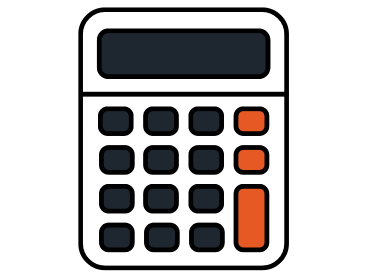Budgeting
Revenue Forecast
The Revenue Forecast provides a structured financial outlook by estimating anticipated income from all revenue streams, including government funding, royalties, Band-owned businesses, and community-based sources. This essential planning tool supports informed budget development and serves as a baseline for monthly Expenditure and Variance Reports, enabling accurate tracking of funding inflows throughout the fiscal year.
Process
- Data Collection: The Financial Controller gathers information from funding agreements, business income, rentals, royalties, and other revenue sources.
- Adjustments: For ongoing funding, amounts from the previous year are adjusted based on any escalation factors in agreements or known changes.
- Project Funding: Only committed funds are included. Unforeseen projects approved later in the year can lead to updates in the Revenue Forecast and Appropriations.
- Review and Update: Completed annually by February, with periodic updates throughout the fiscal year in alignment with Expenditure and Variance Reports.
Timing
The Revenue Forecast should be ready before the fiscal year begins, usually in February, to aid in setting priorities. Updates may occur as funding changes arise during the year.
Appropriations & Program Work Plans
Appropriations strategically align financial resources with Band programs and services through detailed Program Work Plans. This essential process bridges fiscal planning and financial management by establishing clear budget allocations and disbursement schedules, ensuring programs receive timely funding in accordance with the Capital Plan and Preliminary Program Budgets.
Considerations
- Appropriations can be adjusted based on changes in revenue, emergency spending, or shifting priorities.
- Some organizations may opt for a two-phase appropriation: initial allocations at the start of the fiscal year and adjustments at mid-year based on spending assessments.
Process
- Preliminary Budgets: Program Directors submit preliminary budgets for review.
- Review and Approval: Chief and Council/Board review and approve allocations based on the Revenue Forecast and the Capital Plan.
- Allocation Choices: Decision-makers may allocate all funds at the start of the fiscal year or hold back a portion to allocate after a mid-year review.
Timing
Initial appropriations occur before the new fiscal year, with optional mid-year adjustments based on actual spending and needs.
Cash Management
Cash Management encompasses the strategic oversight of the Band’s cash flow, ensuring revenues and expenditures are handled efficiently according to established fiscal policies. This critical function maintains organizational liquidity, supports accurate Expenditure and Variance reporting, and prevents cash flow disruptions through proactive monitoring and control measures.
Process
- Revenue Collection: Ensure revenue aligns with the forecasted cash flow from funding agreements.
- Financial Tools: Utilize reliable financial software and maintain hardware for recording transactions.
- Investment and Credit Options: Strategize for effective use of revenues not immediately needed and maintain overdraft and loan options.
- Transaction Management: Handle bill payments, payroll, and other transactions promptly to ensure smooth financial operations.
Outcome
Accurate cash management supports monthly Expenditure and Variance Reports, facilitating better tracking of financial performance against the budget.
Conclusion
The Budgeting process within Reporting & Budgeting includes comprehensive tools for planning, allocating, and managing funds across programs. From forecasting revenue sources to setting appropriations and managing cash flow, these tools provide a structured approach that ensures fiscal responsibility and accountability throughout the year.
By following each budgeting tool, Band leadership can make informed decisions, effectively allocate resources, and adapt to any financial changes, fostering sustainable financial health for the community/organization.

